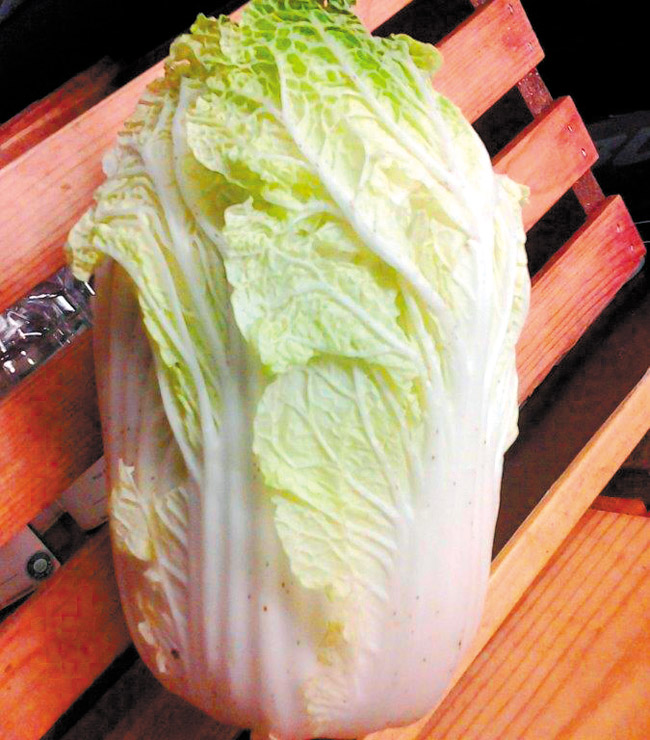Tasty Kimchee
Congratulations to Aiea residents Michelle and Lance Minchew, who are celebrating their second wedding anniversary this month.
Michelle, a graduate of Heald College, has been a medical assistant to Dr. Sylvia Wang for the past three years. She says it is very rewarding to be able to help people on a daily basis, and with her sunny disposition and organization skills, she adds a bright touch to the office. Lance is a small-arms trainer for the Navy. To relax from their hectic schedules they spend time together making silver jewelry and enjoy arts and crafts.
Michelle and Lance enjoy eating out, especially Korean food.
This recipe is dedicated to them for caring about helping people.
Kimchee (or kimchi) can be made with almost any vegetable — it is simply a vegetable, pickled with salt, then spiced with Korean hot pepper powder, garlic and other seasonings (sometimes anchovy sauce is used).
Napa cabbage kimchee is one of the most popular varieties served.
Kimchee is a low-calorie, fatand cholesterol-free food. The combination of salt and spices creates an all-natural preservative, and fermented cabbage is said to promote intestinal health.
Napa cabbage is really Chinese cabbage (from China) and dates back to the fifth century. It is one of the first Asian vegetables to become popular in the United States.
Once considered an out-ofthe-ordinary ingredient, this cabbage can be found in most produce sections of supermarkets. Cabbage also is a rich source of vitamin C, fiber, iron, calcium and potassium. When purchasing, look for firm, heavy heads. Napa cabbage stores well refrigerated. Place in a plastic bag, and do not wash it first. Stored in the vegetable keeper, it should keep for up to two weeks. When it is at its freshest, use it raw in salads but as it gets older it is better for cooking.
TASTY KIMCHEE
Kimchee also can be made with radishes or cucumbers. The taste will change as the kimchee ferments. Gloves can be worn while handling the hot pepper mixture.
Ingredients:
• 1/2 to 1 cup salt (or to taste)
• 1 head Napa cabbage (Chinese won bok), quartered
For red pepper paste:
• 1 daikon radish, julienned
• 1 head of garlic, minced
• 1 to 2 tablespoons ginger, minced
• 2 to 8 tablespoons Korean red pepper flakes, to taste
• 2 bunches green onions, julienned
• 1 tablespoon salt, or to taste
• 1 tablespoon sugar
Method: Place cabbage in large bowl; mix salt with enough water to cover cabbage. Soak cabbage in salt water for 2 to 4 hours. Cabbage should be wilted, supple, limp and salty in taste.
To make red pepper mixture, toss daikon, garlic, ginger, red pepper flakes, green onions, salt and sugar.
Remove cabbage and save salt water. Rinse cabbage and cut into bite-size pieces; discard center core.
Toss cabbage with pepper mixture, coating each piece. Taste and add salt and red pepper flakes as necessary. Pack cabbage into glass jars. Cabbage must be covered with liquid sauce; add saved salt water to jar as necessary. Keep jar at room temperature for one day to allow for ripening. Store in refrigerator, tightly capped. Makes eight servings.
heartychef@hotmail.com






